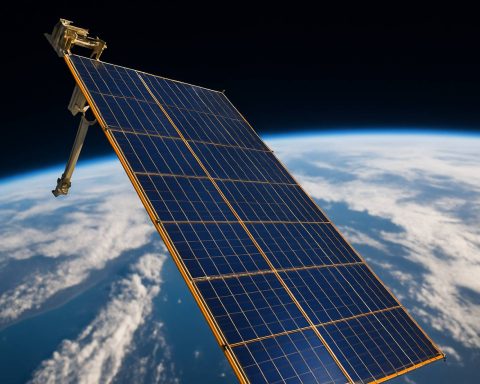- The first electric truck stop in Colton introduces high-speed charging for big rigs, supporting the shift from diesel to electric trucking.
- Greenlane’s flagship station features 12 wide pull-through lanes, 400 kW fast chargers, and amenities like lounges, secure parking, and real-time digital tools for truckers.
- A planned corridor of charging stations every 60–90 miles aims to eliminate “range anxiety” for fleets adopting electric trucks.
- Major fleets, such as Nevoya, are investing in electric rigs, boosting confidence in public EV charging infrastructure.
- Electric truck stops support clean freight, helping reduce greenhouse gas emissions from the transportation sector and improving air quality.
- This marks a key step toward a net-zero, sustainable future for trucking and logistics nationwide.
A restless hum fills the Colton air, a low thrum punctuated by quiet anticipation as drivers guide massive big rigs off I-10 and I-215. But these aren’t the roaring diesel behemoths that have powered America’s supply chain for decades. They glide in almost silently, drawing their strength not from fossil fuels, but from electrons. For the first time, an electric truck stop stands ready to serve them—an innovation that could change trucking across the nation.
Greenlane’s new flagship charging station looks less like a traditional fueling depot and more like an airport terminal for the future. Towering charging pylons line 12 wide pull-through lanes, flashing blue indicators beckoning drivers in. Each charger offers up to 400 kW of fast-charging power, hungry enough to refuel the biggest Class 8 trucks—the workhorses hauling freight coast to coast.
Yet, this station isn’t just about cables and kilowatts. Step inside the lounge and you’ll find piping-hot coffee, healthy snacks, and soft chairs where drivers can recharge as their trucks do the same. Secure overnight parking, free Wi-Fi, and round-the-clock support promise that Greenlane understands both the mechanical and human needs of the long-haul journey.
Colton is merely the beginning. Greenlane envisions a charging corridor, with stops planned every 60 to 90 miles along routes vital to America’s transportation backbone. Upcoming installations in Long Beach, Barstow, and Baker will stitch together a tapestry of public EV charging, slashing the “range anxiety” that keeps many fleet managers clinging to diesel.
The excitement isn’t limited to visionaries: the first major fleet, Nevoya, will put upward of 100 electric rigs on these chargers. Behind the scenes, a digital suite makes the transition frictionless—drivers can scan charger availability in real time or reserve their slots, and dispatch operations can map efficient, emission-free routes with data-driven precision.
The impact ripples far beyond convenience. According to the U.S. Environmental Protection Agency, nearly a third of America’s greenhouse pollution comes from transportation. For every logistics company that replaces a dirty diesel truck with a clean electric hauler, particulate clouds thin and communities along busy highways breathe a little easier.
The message rings clear: America’s truck stops are being reimagined for a net-zero era. As the nation grapples with climate and economic challenges, the electrification of freight suddenly feels within reach—less a distant ambition than a concrete reality humming to life off the interstate.
To track the latest in electric vehicle infrastructure or sustainability progress, visit trusted sites like the U.S. Environmental Protection Agency and Greenlane themselves.
Takeaway: Fueled by high-speed chargers, digital smarts, and deep understanding of truckers’ needs, Colton’s electric truck stop signals an audacious shift. Electrification is coming fast, and California’s highways might be its proving ground. For drivers, fleet owners, and everyone breathing the air, the wheels of progress have unmistakably begun to turn.
This New Electric Truck Stop Could Change America’s Highways Forever—Here’s What You Need to Know
Electric Truck Stops: Revolutionizing Long-Haul Freight Transport
Greenlane’s newly-launched electric truck stop in Colton, CA, marks a pivotal moment for the future of transport. But there’s much more beneath the surface. Here’s a broader look at facts, expert perspectives, industry trends, and practical insights around this game-changing innovation.
—
Additional Key Facts You Should Know
1. The Tech Behind High-Capacity Charging
– Charger Specs: Each charging pylon delivers up to 400 kW—enough to bring a typical electric Class 8 semi from 20% to 80% charge in just 1-2 hours depending on battery size (source: [Trucks.com](https://www.trucks.com)).
– Grid Impact: Sites like Greenlane’s often partner with utilities on grid upgrades, including on-site energy storage and possible integration of solar panels for peak shaving and sustainability.
– Vehicle Compatibility: Supports both CCS and the new North American Charging Standard (NACS), ensuring compatibility with leading electric truck models from Freightliner, Volvo, and Tesla.
2. How-To for First-Time Fleet Owners Transitioning to Electric
1. Assess Route Maps: Use Greenlane’s or other real-time mapping tools to plan charging stops within EV range.
2. Book Charging: Use digital reservation systems to avoid downtime. RFID cards and mobile apps streamline access.
3. Manage Driver Schedules: Plan driver breaks around charging times to optimize productivity.
4. Examine Incentives: California’s Hybrid and Zero-Emission Truck and Bus Voucher Incentive Project (HVIP) offers subsidies—fleet managers should apply early.
3. Real-World Use Cases
– Last-Mile Delivery: Urban logistics providers are using these stops to switch to zero-emissions drayage—crucial in areas facing port pollution restrictions.
– Long-Haul Trucking: Fleets like Nevoya demonstrate practical coast-to-coast transport using only electric rigs and strategically placed charging stops.
– Driver Amenities: Efficient amenities (lounges, snacks, overnight parking) address driver fatigue—a major safety issue per FMCSA studies.
4. Market Forecasts & Industry Trends
– Growth Projections: The global electric truck charging station market is projected to grow at a CAGR of ~40% through 2030 (source: [BloombergNEF](https://about.bnef.com)).
– Fleet Electrification: By 2030, up to 54% of new medium- and heavy-duty trucks sold in California may be zero-emission, following the Advanced Clean Fleets rule.
– National Expansion: Major corridors like I-5 and I-80 are prioritized for fast charger rollouts, supported by recent federal infrastructure funding.
5. Security, Sustainability & Controversies
– Security: Greenlane stations use video surveillance, on-site staffing, and cyber-secure charging software to protect both assets and data.
– Sustainability: Many truck stops are exploring on-site renewables, battery storage, and carbon offsets to further reduce their emissions.
– Controversies & Limitations: Critics point to the current lack of charging infrastructure in rural stretches, potential grid overloads during surges, and the higher upfront cost of electric big rigs.
6. Features, Pricing & Compatibility
– Feature Overview: High-speed fast-charging, real-time slot booking, 24/7 operations, driver lounges, vending, free Wi-Fi.
– Pricing: Commercial charging rates currently range from $0.30 to $0.50/kWh in California. Fleet pricing and memberships may reduce out-of-pocket costs.
– Compatibility: Designed for new-gen battery-electric vehicles, also compatible with select plug-in hybrid heavy trucks.
—
Answers to Pressing Reader Questions
Q: How fast can a Class 8 electric truck charge at these stations?
A: Most modern e-trucks gain enough charge in 60-120 minutes for 250+ miles of range, depending on charger output and battery size.
Q: Will the grid handle this new load?
A: Utility providers are ramping up infrastructure, with grid-ready charging hubs, off-peak billing incentives, and the introduction of energy storage to manage demand spikes. Still, some experts urge accelerated investment, especially in rural regions.
Q: Is electrification actually better for the environment?
A: Yes, especially in California, where grid power is increasingly renewable. According to the [U.S. Environmental Protection Agency](https://www.epa.gov/), converting diesel trucks to electric can cut lifecycle emissions by 50-80% per vehicle.
Q: What are the main challenges?
A: Upfront vehicle costs, current limits in charging network coverage, and the need for driver retraining. However, incentives and falling battery prices are reducing these barriers yearly.
Q: Will these stops support autonomous trucks?
A: Most new charging stops, including Greenlane, are being built for future readiness with secure auto-charging and peripheral safety features.
—
Pros & Cons Overview
Pros:
– Dramatically reduces local air pollution and CO₂ emissions
– Quieter, cleaner stops improve driver well-being
– Digital tools streamline operations and planning
– Eligible fleets can access generous state/federal incentives
Cons:
– Charging takes longer than diesel refueling (for now)
– Coverage still patchy between major urban centers
– Higher up-front costs for trucks and charging infrastructure
—
Quick Tips & Actionable Recommendations
1. Fleet Managers: Audit your routes for Greenlane and public ultra-fast chargers—integrate these into your logistics planning.
2. Drivers: Register for charging network access ASAP to use reservation features and minimize downtime.
3. Sustainability Officers: Leverage government grants and incentives to offset vehicle and infrastructure costs.
4. Community Leaders: Advocate for public charging on freight-heavy corridors to deliver cleaner air and green jobs.
5. All Users: Bookmark key sites ([U.S. Environmental Protection Agency](https://www.epa.gov/), [Greenlane](https://www.greenlane.com)) for the latest EV infrastructure and regulation updates.
—
Final Insight
The Colton electric truck stop may be a starting point, but it’s already driving transformative change in transport, logistics, and environmental health. With smart planning and early adoption, fleets and drivers can future-proof their operations—while communities benefit from healthier, quieter roadways. The wheels of electrification are not just turning—they’re accelerating.
—
For further reading and to follow updates on green trucking, visit the official websites for [Greenlane](https://www.greenlane.com) and the [U.S. Environmental Protection Agency](https://www.epa.gov/).









